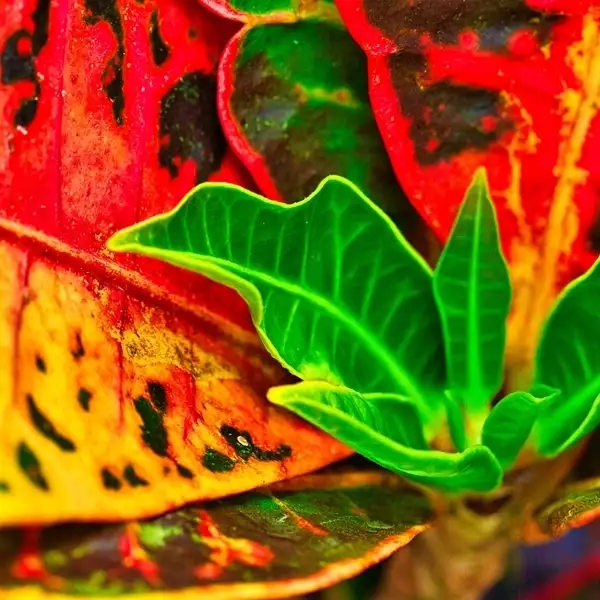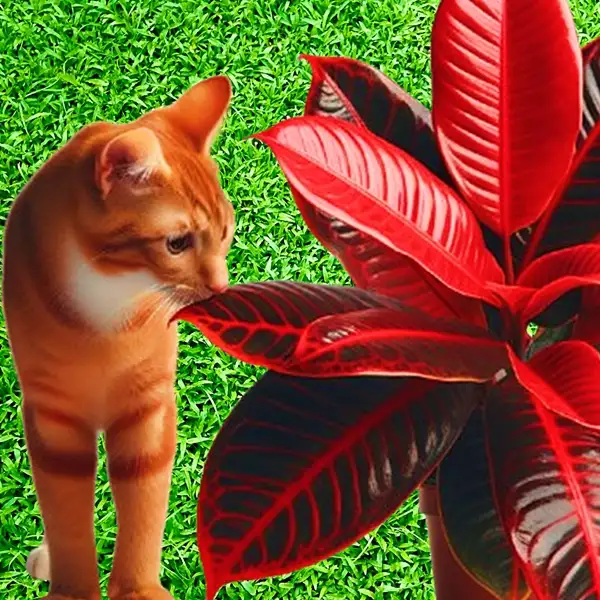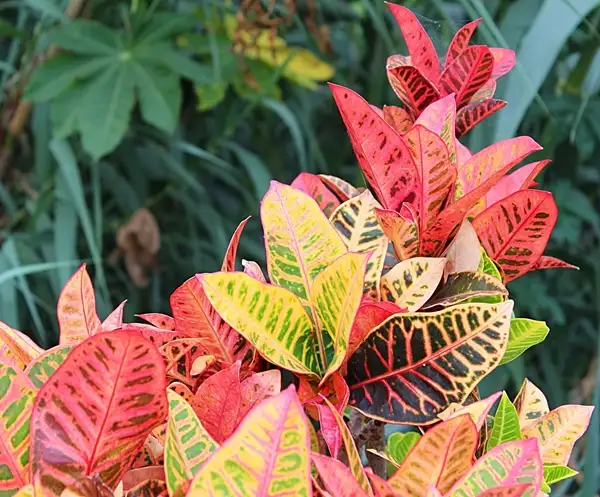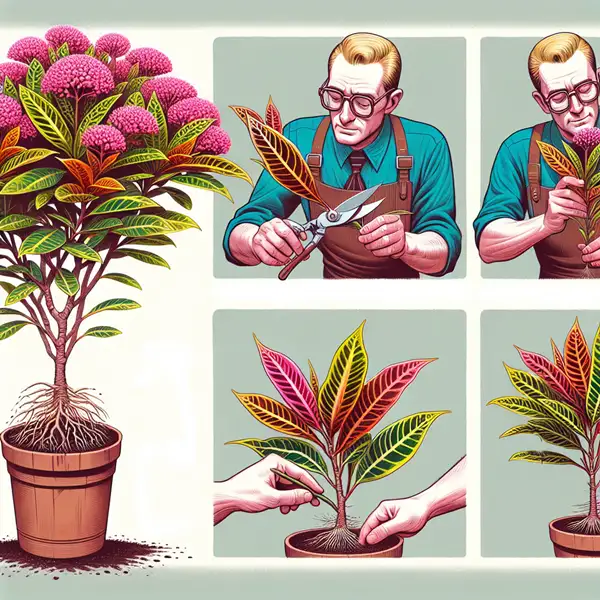Key Takeaways
| Key Insights | Why It Matters |
|---|---|
| Vibrant Appeal | Discover how this plant transforms your indoor space. |
| How to care for Croton plants in Ideal Growing Conditions | Find out the perfect balance of light, temperature, and humidity. |
| Watering Needs | Avoid the common mistakes that could harm your plant. |
| Nutrient Requirements | Learn how to keep your croton thriving with the right nutrition. |
| Pest & Disease Management | Protect your plant from unwanted intruders and diseases. |
| Repotting & Growth Monitoring | Uncover the best techniques to ensure steady growth. |
Croton Plant – Know Your Houseplant
We can only care for a Croton plant in the best way if we understand it completely. This means understanding its requirements well before time and its nature.
The Croton’s leaves offer a visual feast of bold hues such as reds, yellows, oranges & even purples – offering an irreplaceable appeal in any interior decoration scheme. There are around 17 natural varieties of crotons that differ mainly in their leaf shapes & color patterns.
Five popular ones include:
| Variety | Leaf Shape | Color Pattern | Notable Features |
|---|---|---|---|
| Petra | Broad, oval | Green with red, yellow, and orange veins | Popular for its vibrant, multicolored foliage |
| Gold Dust | Small, elliptical | Green with yellow spots | Resembles a spray of gold dust on leaves |
| Mammy | Curly, twisted | Red, green, yellow, and purple | Distinctive leaf shape with intense colors |
| Oakleaf | Tri-lobed, oak-like | Burgundy, red, green, orange, and yellow | Unique leaf shape adds texture |
| Andrew | Long, narrow | Green with creamy white streaks | Exotic appearance, can grow up to 10 feet outdoors |
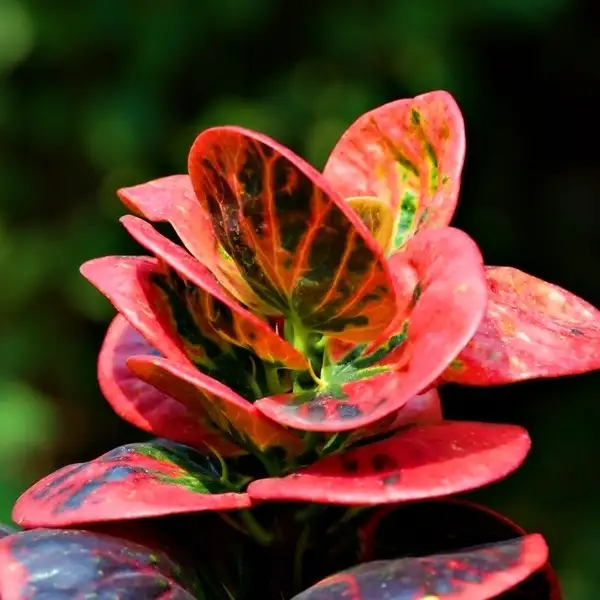
Their striking appearance brings life into any home while also improving air quality – making caring for them well worth the effort.
Moreover, according to Feng Shui consultants like Elaine Giftos Wright, these plants can “add fire energy” into homes because of their vibrant colors.
6 Ideal Conditions for Growing a Croton Plant
Crotons are sunlight-lovers by nature thanks not only to their tropical origin but also because it contributes significantly towards unveiling the dramatic color patterns on these plants’ foliage.
| Condition | Optimal Range | Notes |
|---|---|---|
| Light | Bright, indirect light |
|
| Temperature | 60-85°F (16-29°C) |
|
| Humidity | 40-80% |
|
| Watering | Every 7-10 days |
|
| Soil | Well-draining potting mix |
|
| Fertilizing | Every 2 weeks (spring and summer) |
|
Where to Not Place Croton Plants

Knowing that environmental factors greatly affect your croton’s growth, it is smart to choose its placement thoroughly at home. For instance, placing them near heat vents or drafty windows during winter could be deadly because of fluctuating temperatures.
Simultaneously coordinating lighting and temperature needs according to their preferences ultimately contributes majorly towards fostering a strong, healthy croton.
How Often Should You Water Your Croton Plant
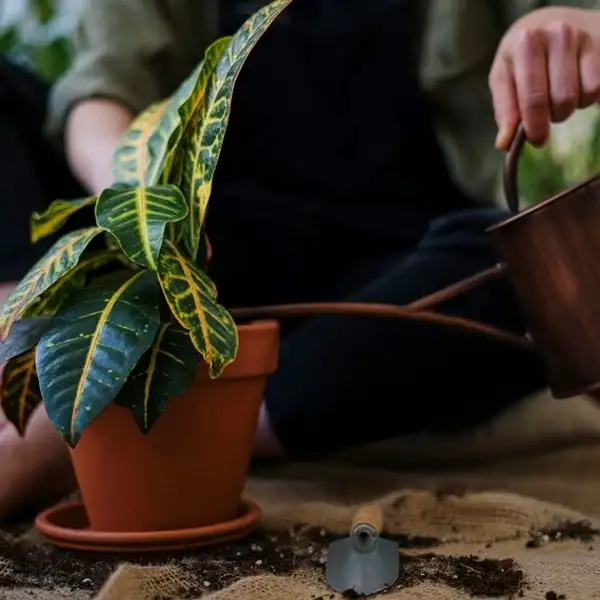
One of the most important aspects of how to care for Croton Plant is maintaining proper watering habits. Maintaining optimal hydration for your croton cannot be stressed enough for this water-sensitive species.
Though they appreciate moist soil conditions – overly saturated ground can spell danger as it fosters root rot—a common threat among houseplants including our vibrant crotons.
Generally speaking, watering every seven to ten days should suffice but bear in mind that frequency often depends on factors like pot size, room temperature, etc. Always confirm if the top inch of soil feels dry before rewatering as this prevents overwatering mishaps.
Nutrient Necessities – Fertilizers & Supplements
Apart from providing right light/temperature conditions and proper watering habits—ensuring nutrient availability through appropriate feeding routines significantly impacts uplifting a croton’s health quotient.
As experts suggest using general-purpose water-soluble fertilizer approximately every two weeks during spring-summer would foster optimum growing conditions playing into lush foliage generation process during the warm months.
Seasonality explicitly plays a role here since colder months typically signify dormancy period thus requiring minimal feeding once/twice definitely not more than that between fall-winter periods—it reduces possible risks associated with overfertilizing which might compromise overall plant health by causing issues e.g. excessive leaf drop etc.
Pest Prevention & Disease Management
Crotons remain vulnerable against pests such as mealybugs, spider mites, etc. Applying preventive measures against these unwelcome bugs consequently paves way to safeguarding this attractive green buddy’s wellness.
- Organic contact insecticides safeguard plants whilst ensuring optimal pest extermination.
- Periodically sponging leaves using soapy water also assists in maintaining their glossy appeal deterring pests simultaneously.
- Furthermore, being mindful of possible diseases helps enable early identification, thereby facilitating immediate corrective action.
- Overwatering for instance could invite root rot whereas inadequate humidity might result in leaf drop.
- Increasing vigilance alongside regular plant inspection eventually reflects on the plant’s longevity through timely intervention.
Repotting Techniques & Growth Monitoring
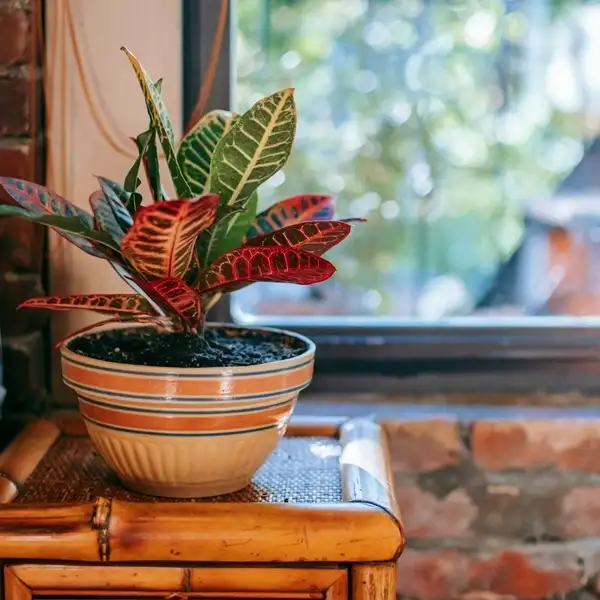
Crotons tend to be slow-growers typically reaching heights between three to six feet indoors. Hence repotting isn’t a task you might often encounter but becomes unavoidable as they mature or if their growing conditions are not appropriate initially.
- Selecting an adequately sized pot is paramount. It should not be too big (might lead to overwatering) or too small (restricts room for growth).
- Make sure the vessel has sufficient drainage & is then layered with a fresh soil mix consisting of peat, humus, perlite, part sand & general potting soil, providing the necessary nutrients & moisture-retaining capacity croton demands.
- According to the UNC Charlotte Botanical Gardens‘ recommendation, adding slow-release fertilizer at the initial repotting stage is beneficial. Hence, making it part of setting up your green friend’s new home would go a long way in encouraging its growth while limiting stress factors.
Final Thoughts
Catering specifically toward Croton Plants mentioned needs involves:
- Incorporating proper light/temperature requirements.
- Aligning watering schedules.
- Becoming acquainted with routine fertilization practices.
- Executing appropriate pest and disease management strategies.
- Brushing up your knowledge regarding repotting techniques.
These steps will aid in nurturing lively, healthy & vibrantly colored Croton inside your abode without doubt.
Frequently Asked Questions
How often should I water crotons?
Water your croton every 7 to10 days, checking top inch of soil for dryness. Make sure soil stays moist but not soggy.
Do croton plants need full sun?
No, crotons prefer indirect bright light or partial shade. Direct sunlight can burn the leaves.


